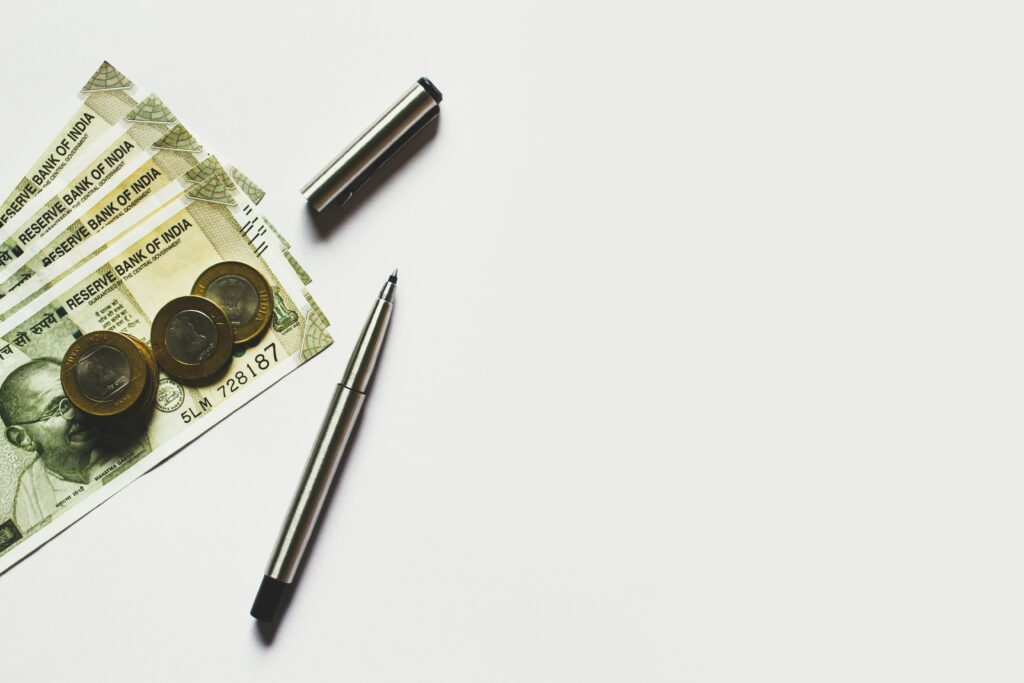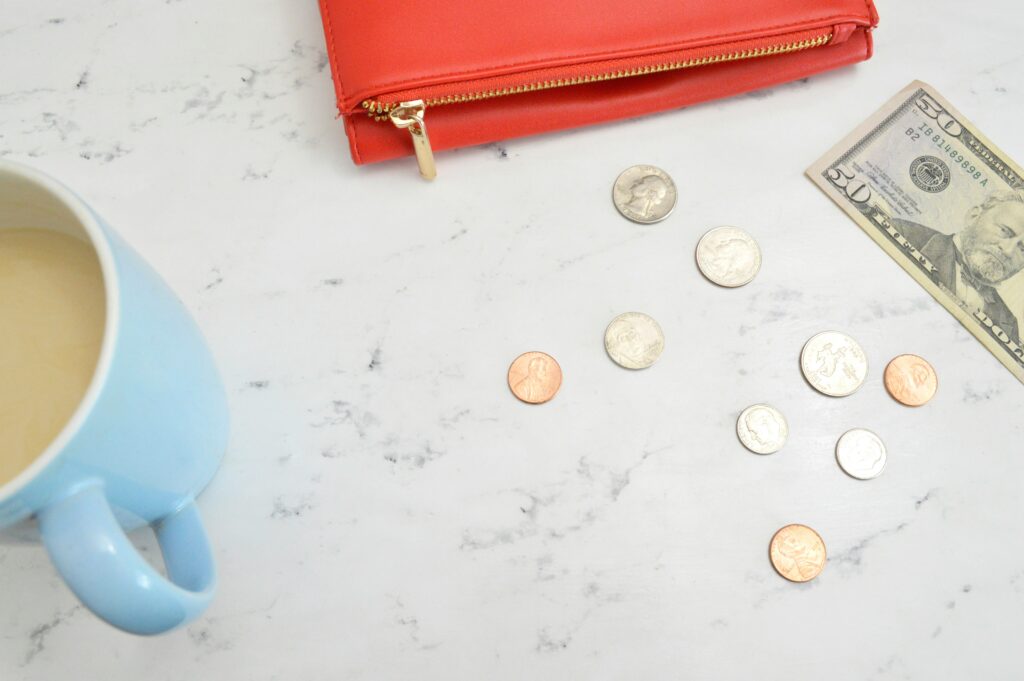19 Creative Ways To Save Money Right Now

Look, I get it. You’re tired of feeling broke at the end of every month, right? The paycheck lands in your account, bills devour most of it, and suddenly you’re wondering where all your cash went. I’ve been there too, and honestly, it’s frustrating.
But here’s the good news: saving money doesn’t have to feel like torture. The truth is, most people don’t need to earn more; they need to be smarter about what they already have. That’s where this article comes in.
I’ve spent years studying personal finance (literally, I have degrees in it), and I’ve tested hundreds of money-saving strategies. Some are gimmicks. Others? They’re absolute game-changers. This isn’t your typical “skip your latte” advice. We’re going deeper.
We’re talking real, creative tactics that actually work in the real world. Let’s dig into 19 ways you can save money starting today.

1. Automate Your Savings Before You Spend
Why This Actually Works
Ever wondered why automation is such a money-saver? Simple: what you don’t see, you don’t spend. When you move money to savings automatically on payday, you’re playing a psychological trick on yourself, and it works beautifully.
Set up an automatic transfer from your checking account to a separate savings account right after you get paid. Even $50 per paycheck adds up to over $1,200 a year. The beauty? You won’t miss money you never see in the first place.
I recommend starting with a smaller amount if a big number stresses you out. The goal is consistency, not perfection. Start with 5-10% of your paycheck and increase it every time you get a raise. Your future self will thank you.
2. Use the 50/30/20 Budget Framework
Breaking Down Your Money Smartly
Budgeting doesn’t have to be complicated. The 50/30/20 rule is my go-to because it’s simple and actually sustainable:
- 50% for needs (housing, utilities, groceries, insurance)
- 30% for wants (entertainment, dining out, hobbies)
- 20% for savings and debt payoff
The genius here? You’re not cutting out fun entirely. You’re just being intentional about it. I’ve worked with people who tried restrictive budgets and quit after two weeks. This method? People stick with it because it feels balanced.
Track your spending for one month to see where you actually stand. Most people discover they’re spending way more than they thought in the “wants” category. That awareness alone changes behavior.
3. Meal Plan and Cook at Home (With Strategy)
The Real Numbers Behind Food Savings
Restaurant meals average $12-15 per person for casual dining. That’s $60-75 for a family of four. Cook the same meal at home? You’re looking at $10-15 total. That’s a $45-60 difference per meal. But here’s the thing: mindless meal planning fails. Instead, try this approach: Pick 5-7 versatile meals you enjoy and rotate them weekly.
Use ingredients that overlap across meals, so nothing goes to waste. Buy proteins on sale and freeze them. Prep veggies on Sunday so you’re not tempted by expensive takeout when you’re tired.
FYI, this strategy can save you $200-300 monthly depending on your family size. That’s over $3,000 yearly. 🙂
4. Cancel Subscriptions You Actually Don’t Use
The Subscription Trap
Most people have subscriptions they forget about. Streaming services, gym memberships, apps, premium features, they quietly drain $5-20 monthly each. Five forgotten subscriptions? That’s $60-100 a month or $720-1,200 yearly. Go through your bank and credit card statements right now.
Write down every subscription. Then, be honest: did you use it last month? If not, cancel it immediately. Some subscriptions are worth keeping.
A fitness app you use daily? Keep it. That meditation app from January you opened once? Cancel it. Only keep the ones that genuinely improve your life.
5. Negotiate Bills (Yes, Really)
You Have More Power Than You Think
Here’s what most people don’t realize: almost everything is negotiable. Insurance premiums, internet bills, phone plans, companies want to keep your business. Call your provider and ask a simple question: “What deals do you have for loyal customers?” Often they’ll offer you lower rates just for asking.
IMO, 30 minutes on the phone can save you $30-50 monthly. Insurance especially, shop around annually. Just getting three quotes can reveal huge savings. I once helped a client find a better policy that saved her $600 yearly. It took one afternoon.
6. Use Cashback Apps and Rewards Programs
Making Your Purchases Work Harder
Why spend money and get nothing back? Apps like Rakuten, Ibotta, and BeFrugal give you cash back on purchases you’re already making. Here’s how to maximize this:
- Download 2-3 cashback apps and check them before shopping
- Use a rewards credit card for bonus points (pay it off monthly, this is critical)
- Stack rewards: combine app cashback with store loyalty rewards
- Redeem points for gift cards you’ll actually use
I’m not saying you should spend more just to earn rewards. That defeats the purpose. But if you’re buying groceries anyway, why not earn 1-3% back? Over a year, this adds $150-300 to your pocket.
7. Try No-Spend Challenges
Gamify Your Savings
A no-spend challenge is simple: pick a category (dining out, shopping, subscriptions) and don’t spend money there for 30 days. This does two things. First, it saves money directly. Second, it breaks spending habits.
Many people discover they don’t actually miss what they cut out. Pick one category you know you overspend in. Challenge yourself for just 30 days. Track how much you save. This psychological win motivates you to keep going.
8. Refinance High-Interest Debt
Stop Paying Extra For Your Own Money
If you’re paying high interest on credit cards or personal loans, refinancing is like getting free money. Lowering your rate from 18% to 8% on a $5,000 balance saves you hundreds. Look into balance transfer cards (often 0% for 6-12 months), personal loans, or debt consolidation. Run the numbers, sometimes refinancing takes 30 minutes but saves thousands. This is especially powerful if you have multiple credit cards. Consolidating to one lower-rate loan simplifies payments and reduces interest costs significantly.
9. Buy Generic Brands (Without Guilt)
The Quality Secret Nobody Talks About
Here’s a truth that surprised me: generic brands are often made by the same companies as name brands. Same quality, same ingredients, different packaging, way lower price. Savings vary, but generic items are typically 20-40% cheaper. Stock up on:
- Medications and over-the-counter items
- Groceries and pantry staples
- Household cleaning supplies
- Basic clothing items
I’ve challenged people to do a blind taste test between name-brand and generic items. Most can’t tell the difference. Save the premium brands for things where you genuinely notice quality differences.
10. Use Public Transportation or Carpool
The True Cost of Driving Alone
Owning a car costs more than most people realize: gas, maintenance, insurance, depreciation. If you drive alone to work daily, you’re spending $300-600 monthly just for that commute. Look at alternatives:
- Public transit passes are usually $50-150 monthly
- Carpooling splits costs with others
- Biking or walking costs nothing
- Remote work one or more days weekly
Even switching to transit three days a week saves $150-300 monthly. That’s $1,800-3,600 yearly. Over five years? You’re looking at $9,000-18,000 in savings.
11. DIY Maintenance and Repair
When YouTube Becomes Your Financial Advisor
Before calling a professional, check YouTube. Seriously. Many household and car repairs aren’t as complicated as they seem and doing them yourself saves serious cash. Oil changes, air filter replacements, basic plumbing fixes, furniture repairs, you can learn these free online.
A professional charge $100+ for tasks that cost $10-20 in supplies. Important: know your limits. Complex electrical work or structural issues need professionals. But simple tasks? DIY them. You’ll save money and actually learn something useful.
12. Leverage Free Financial Tools and Resources
Stop Paying For What’s Free
Budgeting apps, investment platforms, financial planning tools, many are completely free:
- YNAB (You Need A Budget) or Mint for tracking spending
- Acorns or Stash for automatic investing
- Credit monitoring services for free credit scores
- Library resources for financial education books
FYI, your bank often offers free budgeting tools too. Check your account dashboard. Why pay for something when the free version does the job? Use these tools to understand your finances better, which naturally leads to smarter decisions.
13. Adjust Your Tax Withholdin
Get Your Own Money Back
Most people get a tax refund every year. Sounds great, right? Not really, it means you lent the government money interest-free all year. Adjust your W-4 form to reduce withholding and get more in each paycheck.
That extra $50-200 monthly can go straight to savings, where it actually earns you interest. I know taxes are boring, but this is worth 20 minutes. Use the IRS withholding calculator on their website to get this right.
14. Start a Side Hustle (Even a Small One)
Extra Income Without Extra Hours
You don’t need to launch a business. Small side gigs add real money:
- Freelance writing or graphic design on Fiverr or Upwork
- Selling items you don’t use on eBay or Facebook Marketplace
- Dog walking with Rover or Wag
- Delivery driving with DoorDash or Instacart
- Task services through TaskRabbit
Even 5-10 hours monthly at $15-25/hour adds $300-600 yearly. Do this for two years and you’ve funded a nice vacation or paid down debt. The key? Pick something you don’t hate. The extra money only matters if you actually stick with it.
15. Build an Emergency Fund (Properly)
The Safety Net That Changes Everything
An emergency fund isn’t sexy, but it’s essential. When unexpected costs hit, car repair, medical bill, job loss, you don’t panic and go into debt. Start with $1,000, then build to 3-6 months of living expenses.
This sounds huge, but you don’t need it overnight. Add $50-100 monthly and you’ll get there. Keep this money in a high-yield savings account (currently earning 4-5% annual interest) separate from your checking account. This way, it’s accessible but not tempting to spend.
An emergency fund stops the cycle of living paycheck to paycheck. I’ve seen people’s entire financial life change once they had this cushion.
16. Reduce Energy Costs at Home
Free and Cheap Ways to Lower Your Bill
Your utility bill is often an easy target for savings:
- Switch to LED light bulbs (cost $2-3 each, last years, use 75% less energy)
- Adjust your thermostat 2-3 degrees (saves $10-15 monthly)
- Unplug devices when not in use or use power strips
- Seal air leaks around windows and doors with caulk ($10-20 total)
- Wash clothes in cold water (saves $15-25 monthly)
These changes are free to $100 total and reduce your bill by 15-30%. Over a year, that’s $200-500 saved.
17. Swap Instead of Buy
The Sharing Economy Works
Whether it’s tools, clothes, or skills, swapping saves money without sacrificing quality.
- Clothing swap parties with friends (free new wardrobe)
- Tool libraries for occasionally-needed equipment
- Skill swaps (you teach photography, they teach Spanish)
- Free community sharing groups on Facebook
- Rent textbooks instead of buying them
This circular economy approach stretches your money while building community. Plus, it’s better for the environment. 🙂
18. Batch Your Errands and Shop Smart
Efficiency Saves Time and Money
Making multiple trips wastes gas and increases impulse purchases. Batch errands into one trip and plan your shopping:
- Make a list and stick to it (no impulse buys)
- Shop when hungry and alert (not tired and hungry)
- Compare unit prices, not just shelf prices
- Use coupons strategically (only for things you’d buy anyway)
- Shop sales cyclically (buy pasta during sales, not when you need it)
This approach cuts grocery spending 10-20% while saving time. That’s $50-100 monthly for a typical family.
19. Invest in Things That Pay You Back
The Ultimate Money Hack
Finally, invest in things that reduce future costs or increase future earnings:
- Quality shoes and winter coat (lasts years, saves replacements)
- A good mattress (you spend 8 hours there; it matters)
- Cookware that lasts (saves replacing cheap pans constantly)
- Education or certifications (boost earning potential)
- Preventive health care (cheaper than treating problems later)
This isn’t about spending more, it’s about smart spending. A $200 mattress you use nightly for 10 years costs $20/year. A $500 quality mattress lasting 15 years costs $33/year. Better sleep? Bonus.
Final Thoughts
Here’s the real secret about saving money: it’s not one big change, it’s many small ones. Pick 3-5 strategies from this list that resonate with you. Start there. Don’t try to do everything at once. The goal isn’t to live miserably, it’s to spend intentionally.
When you know where your money goes and why, you feel in control. That’s powerful. Start today. Pick one strategy. Do it for 30 days. Track how much you save. Then add another. Before you know it, you’ll have extra money actually accumulating instead of disappearing.
Your future self is counting on present-day you to make smart decisions. What’s stopping you from picking one strategy right now? You’ve got this. Now go save that money. 🙂









